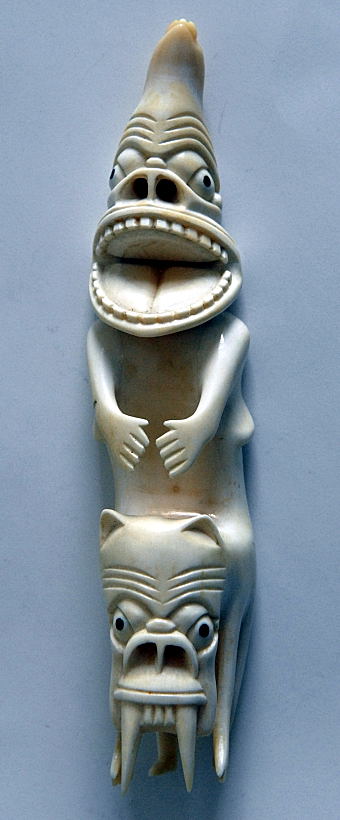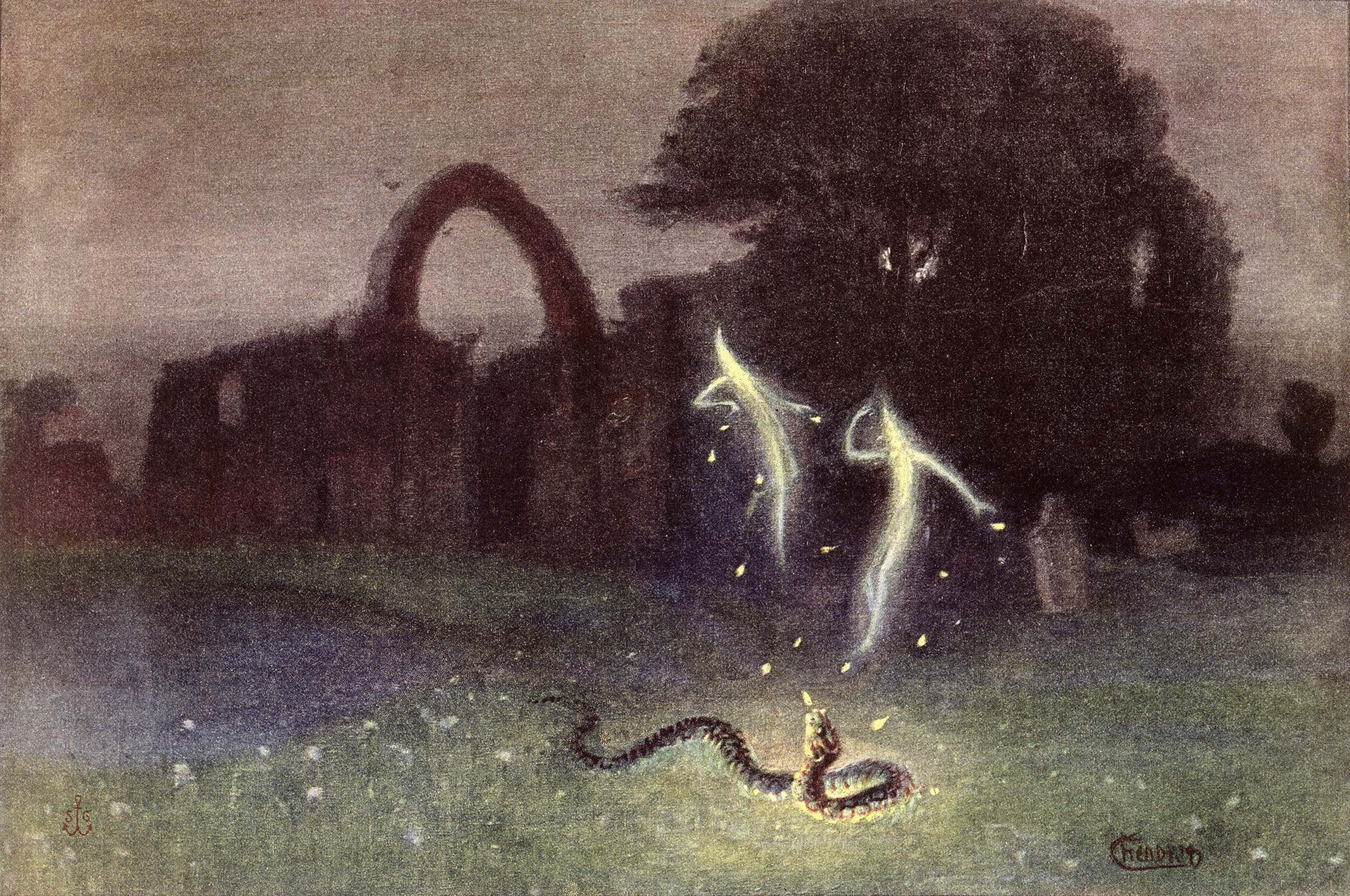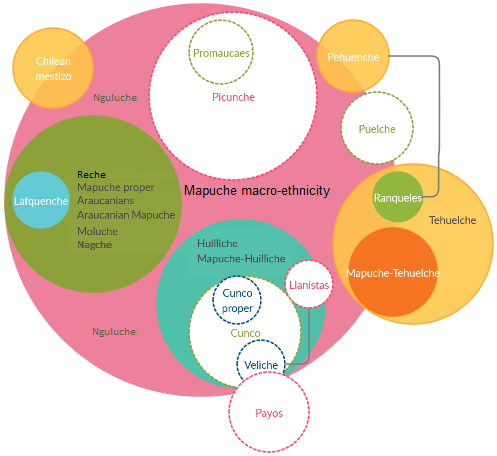|
Anchimayen
The Anchimayen (in the Mapudungun language, also spelled "Anchimallén" or "Anchimalguén" in Spanish) is a mythical creature in Mapuche mythology. Anchimayens are described as little creatures that take the form of small children, and can transform into flying fireballs that emit bright light. They are the servants of a kalku (a type of Mapuche sorcerer). According to some sources, the goddess she was originally conceived of as the moon goddess, married to the sun, but later developed into a (will-o'-the-wisp) type being that frightens and unhorses travelers. Anchimayens are sometimes confused with Kueyen (the Mapuche lunar goddess), because she also produces a bright light. See also * Ball lightning Ball lightning is a rare and unexplained phenomenon described as Luminosity, luminescent, spherical objects that vary from pea-sized to several meters in diameter. Though usually associated with thunderstorms, the observed phenomenon is repor ... * Energy being * Tupila ... [...More Info...] [...Related Items...] OR: [Wikipedia] [Google] [Baidu] |
Ball Lightning
Ball lightning is a rare and unexplained phenomenon described as Luminosity, luminescent, spherical objects that vary from pea-sized to several meters in diameter. Though usually associated with thunderstorms, the observed phenomenon is reported to last considerably longer than the split-second flash of a lightning strike, lightning bolt, and is a phenomenon distinct from St. Elmo's fire and will-o'-the-wisp. Some 19th-century reports describe balls that eventually explode and leave behind an odor of sulfur. Descriptions of ball lightning appear in a variety of accounts over the centuries and have received attention from scientists. An optical spectrum of what appears to have been a ball lightning event was published in January 2014 and included a video at high frame rate. Nevertheless, scientific data on ball lightning remain scarce. Although laboratory experiments have produced effects that are visually similar to reports of ball lightning, how these relate to the supposed ... [...More Info...] [...Related Items...] OR: [Wikipedia] [Google] [Baidu] |
Kalku
Kalku or Calcu, in Mapuche mythology, is a sorcerer or witch who works with black magic and negative powers or forces. The essentially benevolent shamans are more often referred to as '' machi'', to avoid confusion with the malevolent kalku. Its origins are in Mapuche tradition. The word kalku is a borrowing from Puquina language. Its adoption by Mapuches fits into a pattern of parallels in the Mapuche and Central Andean cosmology ( Inca religion) dating back to the times of Tiwanaku Empire when Puquina was an important language. Description The ''kalku'' is a semi-mythical character that has the power of working with '' wekufe'' "spirits or wicked creatures". An example of a ''wekufe'' is the Nguruvilu. The ''kalku'' also have as servants other beings such as the Anchimayen, or the Chonchon (which is the magical manifestation of the more powerful ''kalku''). A mapuche ''kalku'' is usually an inherited role, although it could be a ''machi'' that is interested in lucrative ... [...More Info...] [...Related Items...] OR: [Wikipedia] [Google] [Baidu] |
Energy Being
An energy being is an alleged life form that is composed of energy rather than matter. They appear in paranormal/ UFO accounts, and in various works of speculative fiction. See also * Anchimayen * Angel * Demon * Divine spark * Inward light * Jinn Jinn or djinn (), alternatively genies, are supernatural beings in pre-Islamic Arabian religion and Islam. Their existence is generally defined as parallel to humans, as they have free will, are accountable for their deeds, and can be either ... * Non-physical entity * Spirit References Alleged extraterrestrial beings Science fiction themes Stock characters Paranormal {{paranormal-stub ... [...More Info...] [...Related Items...] OR: [Wikipedia] [Google] [Baidu] |
Tupilaq
A ( or in Inuktitut syllabics, plural ) is a monster or carving of a monster. In Inuit religion, especially in Greenland, a tupilaq was an avenging monster fabricated by an angakkuq (a practitioner of witchcraft or shamanism) by using various objects such as animal parts (bone, skin, hair, sinew, etc.) and even parts taken from the corpses of children. The creature was given life by ritualistic chants. It was then placed into the sea to seek and destroy a specific enemy. The use of tupilaq was considered risky, as if it was sent to destroy someone who had greater magical powers than the one who had formed it, it could be sent back to kill its maker instead,Kleivan & Sonne 1985: 23; Plate XLIII, XLV although the maker of the tupilaq could escape by public confession of their deed. Because tupilaq were made in secret, in isolated places and from perishable materials, none have been preserved. Early European visitors to Greenland, fascinated by the native legend, were eager to s ... [...More Info...] [...Related Items...] OR: [Wikipedia] [Google] [Baidu] |
Tikoloshe
In Nguni mythology, the tokoloshe, tikoloshe, tikolosh, tonkolosh, tonkolosi, tokolotshe, thokolosi, or hili is a dwarf-like water spirit. It is a mischievous and evil spirit that can become invisible by drinking water or swallowing a stone. Tokoloshes are called upon by malevolent people to cause trouble for others. At its least harmful, a tokoloshe can be used to scare children, but its power extends to causing illness or even the death of the victim. Protection against them includes traditional methods such as raising beds off the ground and interventions by spiritual figures like pastors with an apostolic calling or traditional healers ( sangomas), who are seen to possess the power to banish them. The tokoloshe is often referenced satirically to critique the influence of superstitions on behaviour and society. Mythology The advent of the phantom tokoloshe came about through Bantu folklore to explain why people inexplicably died while sleeping in their rondavels at nig ... [...More Info...] [...Related Items...] OR: [Wikipedia] [Google] [Baidu] |
Corporeal Undead
The undead are beings in mythology, legend, or fiction that are deceased but behave as if they were alive. A common example of an undead being is a corpse reanimated by supernatural forces, by the application of either the deceased's own life force or that of a supernatural being (such as a demon, or other evil spirit). The undead may be incorporeal (ghosts) or corporeal ( mummies, vampires, skeletons, and zombies). The undead are featured in the belief systems of most cultures, and appear in many works of fantasy and horror fiction. The term is also occasionally used for real-life attempts to resurrect the dead with science and technology, from early experiments like Robert E. Cornish's to future sciences such as "chemical brain preservation" and "cryonics." While the term usually refers to corporeal entities, in some cases (for example, in ''Dungeons & Dragons''), the term also includes incorporeal forms of the dead, such as ghosts. History Bram Stoker considered u ... [...More Info...] [...Related Items...] OR: [Wikipedia] [Google] [Baidu] |
Mapudungun
Mapuche ( , ; from 'land' and 'people', meaning 'the people of the land') or Mapudungun (from 'land' and 'speak, speech', meaning 'the speech of the land'; also spelled Mapuzugun and Mapudungu) is either a language isolate or member of the small Araucanian family related to Huilliche spoken in south-central Chile and west-central Argentina by the Mapuche people. It was formerly known as Araucanian, the name given to the Mapuche by the Spanish; the Mapuche avoid it as a remnant of Spanish colonialism. Mapudungun is not an official language of Chile and Argentina, having received virtually no government support throughout its history. However, since 2013, Mapuche, along with Spanish, has been granted the status of an official language by the local government of Galvarino, one of the many communes of Chile. It is not used as a language of instruction in either country's educational system despite the Chilean government's commitment to provide full access to education in Mapu ... [...More Info...] [...Related Items...] OR: [Wikipedia] [Google] [Baidu] |
Mapuche Mythology
Mapuche religion is the traditional Native American religion of the Mapuche people. It is practiced primarily in south-central Chile and southwest Argentina. The tradition has no formal leadership or organizational structure and displays much internal variation. Mapuche theology incorporates a range of deities and spirits. One of the most prominent deities is Ngünechen, sometimes equated with the Christian God. Communal prayer ceremonies are termed ''ngillatun'' and involve the provision of offerings and animal sacrifice. Various different ritual specialists were historically active among the Mapuche, but in the 20th century many of these died out, leaving the ''machi'' as the main kind. These ''machi'' are tasked with overseeing healing and divination, tasks accomplished through their communication with spirits. Historically, the Mapuche were politically independent and prevented conquest by the Incan and Spanish Empires. In 1883 the Chilean military defeated the Mapuche and ... [...More Info...] [...Related Items...] OR: [Wikipedia] [Google] [Baidu] |
Will-o'-the-wisp
In folklore, a will-o'-the-wisp, will-o'-wisp, or ; ), is an atmospheric ghost light seen by travellers at night, especially over bogs, swamps or marshes. The phenomenon is known in the United Kingdom by a variety of names, including jack-o'-lantern, friar's lantern, and hinkypunk, and is said to mislead and/or guide travellers by resembling a flickering lamp or lantern. Equivalents of the will-o'-the-wisps appear in European folklore by various names, e.g., in Latin, in French, or in Germany. Equivalents occur in traditions of cultures worldwide (cf. ); e.g., the Naga fireballs on the Mekong in Thailand. In North America the phenomenon is known as the Paulding Light in Upper Peninsula of Michigan, the Spooklight in Southwestern Missouri and Northeastern Oklahoma, and St. Louis Light in Saskatchewan. In Arab folklore it is known as . In folklore, will-o'-the-wisps are typically attributed as ghosts, fairies or elemental spirits meant to reveal a path or direction. Thes ... [...More Info...] [...Related Items...] OR: [Wikipedia] [Google] [Baidu] |
Kueyen
Kueyen or kuyen is the name given to the moon in Mapuche The Mapuche ( , ) also known as Araucanians are a group of Indigenous peoples of the Americas, Indigenous inhabitants of south-central Chile and southwestern Argentina, including parts of Patagonia. The collective term refers to a wide-ranging e ... mythology. She is the principal wangulen spirit. Kueyen governs the others wangulen spirits (spirits of the stars). Kueyen is married Antu (the Pillan spirit that represents the sun). Mistakenly, Kueyen is also sometimes known by the name of Anchimallen (a name that makes reference to another class of mythological creatures). References *Alberto Trivero (1999); Trentrenfilú, Proyecto de Documentación Ñuke Mapu. Mapuche goddesses Lunar goddesses {{Chile-myth-stub ... [...More Info...] [...Related Items...] OR: [Wikipedia] [Google] [Baidu] |
Mapuche Legendary Creatures
The Mapuche ( , ) also known as Araucanians are a group of Indigenous inhabitants of south-central Chile and southwestern Argentina, including parts of Patagonia. The collective term refers to a wide-ranging ethnicity composed of various groups who share a common social, religious, and economic structure, as well as a common linguistic heritage as Mapudungun speakers. Their homelands once extended from Choapa Valley to the Chiloé Archipelago and later spread eastward to Puelmapu, a land comprising part of the Argentine pampa and Patagonia. Today the collective group makes up over 80% of the Indigenous peoples in Chile and about 9% of the total Chilean population. The Mapuche are concentrated in the Araucanía region. Many have migrated from rural areas to the cities of Santiago and Buenos Aires for economic opportunities, more than 92% of the Mapuches are from Chile. The Mapuche traditional economy is based on agriculture; their traditional social organization consists of e ... [...More Info...] [...Related Items...] OR: [Wikipedia] [Google] [Baidu] |






